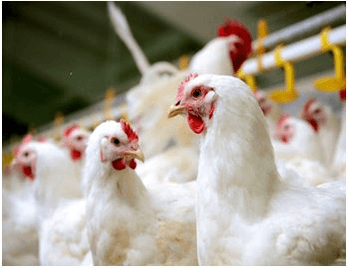EVALUATION OF ANTICOCCIDIAL ACTIVITY OF METHANOLIC EXTRACT OF RICINUS COMMUNIS IN BROILER
Keywords:
anticoccidial, immunomodulatory, Ricinus communis, sporulated oocystsAbstract
Aims and Objectives: Coccidiosis is recognized as the parasitic disease which has the greatest economic impact on poultry production. The emergence of resistant strains to available drugs has become a major problem in order to treat/control coccidiosis. Botanicals can act as alternative to anticoccidial drugs. This study has therefore, been planned to evaluate both in vitro and in vivo anticoccidial activity of the plant R. communis.
Methods: In in vitro trial 20, 10, 5, 2.5, 1.25 and 0.625 percent, DMSO dissolved crude aqueous methanolic extract of R. communis was used to investigate its inhibitory effect upon sporulation of oocysts. The research was done in University of Agriculture, Faisalabad, Pakistan, with the collaboration of Parasitology, Pathology and Poultry departments. In in vivo trial, the plant was used at three graded concentrations for evaluation of its anticoccidial activity in broiler birds. A total of 144 (one-day-old) broiler chicks were divided into six groups each having 24 chicks. At age of 15 days, groups I, II and III were given 4%, 5% and 6% of dried powder of R. communis respectively. Group IV was served as positive control (infected, toltrazuril treated), group V as negative control (infected, non-medicated) and group VI was serve as non-infected and non-medicated control. All groups except group VI were infected orally with 50,000 sporulated oocysts of mixed Eimeria species at 18th day of age.
Result: After 7 days of inoculation, six birds from each group were slaughtered to get results on oocysts score, lesion score, relative organ weight, hematology and immunomodulatory effect. Data was analyzed by using analysis of variance (ANOVA) and group means were compared by Duncan’s multiple range tests.
Conclusion: It was concluded that R. communis can be used as a prophylactic and therapeutic agent at local and regional level for the control of coccidiosis in broilers.

Peer Review History:
Received: 3 June 2021; Revised: 6 July; Accepted: 10 August; Available online: 15 September 2021
Academic Editor: Dr. Nuray Arı , Ankara University, Turkiye, ari@ankara.edu.tr
, Ankara University, Turkiye, ari@ankara.edu.tr
Reviewers:
Ahmad Najib , Universitas Muslim Indonesia, Makassar, Indonesia, ahmad.najib@umi.ac.id
, Universitas Muslim Indonesia, Makassar, Indonesia, ahmad.najib@umi.ac.id
Dr. Dennis Amaechi , MrsFoluBabade Mini Estate , Flat 5 by Old Soldiers Quarter, Sabongari/Bwari, Abuja- Federal Capital Territory, Nigeria. amaechitoexcel@yahoo.com
, MrsFoluBabade Mini Estate , Flat 5 by Old Soldiers Quarter, Sabongari/Bwari, Abuja- Federal Capital Territory, Nigeria. amaechitoexcel@yahoo.com
Downloads

Published
How to Cite
Issue
Section

This work is licensed under a Creative Commons Attribution-NonCommercial 4.0 International License.









 .
.